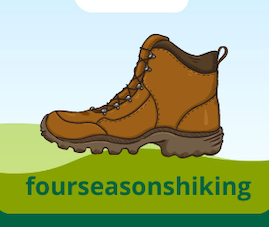I’ve realized that having the right gear can make or break a camping trip. Among the essentials, trekking poles stand out as game-changers. They’re not just sticks you carry to look the part; they’re tools that can vastly improve your hiking experience.
When you’re navigating uneven ground or crossing streams, trekking poles offer an extra pair of points to find purchase, enhancing stability and confidence with each step. More than just aids for balance, they’re critical in preventing missteps and falls, which is especially crucial when you’re miles from help.
But trekking poles aren’t just for the rough patches. They distribute the load of your backpack, sparing your knees and hips from the brunt of the impact with every downhill step. This redistribution of force can mean the difference between waking up ready for another day’s trek and being sidelined by joint pain.
Choosing the right pair involves a few considerations. You’d want to pay attention to the pole’s weight because every ounce counts when you’re on the trail. Durability is another non-negotiable, as the last thing you need is equipment that fails when you’re deep in the backcountry. The best poles adjust in length to suit your height and the terrain, providing support that’s just right no matter the incline.
Moreover, mastering the use of trekking poles is essential for making the most of their benefits. Efficiency in their usage conserves energy – something you will appreciate after a long day’s hike. Proper technique can save you effort on ascents and offer support when descending, ensuring you have more energy to enjoy your camping experience once you’ve set up camp.
Choosing the Right Trekking Poles for Your Next Outdoor Excursion

When it comes to camping, I’ve found that having the right gear can make all the difference. And trekking poles, believe it or not, play a pivotal role in this equation.
Let’s focus on what you need to know to pick the perfect pair for your adventures.
Next, consider the materials. Trekking poles are usually made from aluminum or carbon fiber. Aluminum is resilient and less expensive, while carbon fiber is lighter but more prone to snapping under high stress. Think about the nature of your camping trips. Are you a casual camper or do you frequently tackle challenging trails?
Now let’s talk about adjustability. Adjustable-length poles are versatile—they can be shortened or lengthened to suit different terrains and body heights. On the other hand, fixed-length poles have a weight advantage and are often more robust due to the absence of moving parts.
Striking a balance between weight and strength is essential. Lightweight poles are a joy to carry, especially over long distances. However, they need to be strong enough to support your weight and the rigors of the terrain. Don’t compromise; seek out poles that offer both.
Comfort is king, and that applies to the grip of your trekking poles too. Cork grips are comfortable and reduce moisture from sweaty hands. Foam has a nice cushiony feel and is also moisture-wicking. Rubber grips, while durable, can be less forgiving on warmer days.
The right trekking poles are an investment in your camping experience. Quality can significantly affect your comfort, endurance, and ultimately, safety. Cheaply made poles might save you money initially, but a reliable and durable pair is a better long-term investment.
Don’t overlook accessories like snow baskets or mud disks for your poles—they extend functionality. Regular maintenance, such as cleaning and checking for wear, will also ensure that your poles are ready for many more camping trips to come.


Great post! I have gone camping a few times but never actually thought about bringing trekking poles. Our walks have been fairly far and also in pretty tough terrain. I have sometimes found myself somewhat unsteady without any support. Trekking poles is definitely something I am going to consider to bring with me next time I go camping. I have a question regarding the material of the poles when going for walks in snow, is carbon or aluminum better?
Thank you for your comment!
Carbon can break under pressure, whereas aluminum has some give. I hope that helps answer your question.
Lonnie
I’ve always wondered how much difference a good pair of trekking poles could make on a hike. Last summer, I did a pretty challenging trail without them, and it was tough on my knees. After reading your tips, I’m definitely going to invest in a pair for my next trip. Do you have any recommendations for specific brands or features to look out for? Thanks for the great insights
Trekking poles can be essential, especially when hiking in tough terrain and inclines.
Thank you!
Lonnie